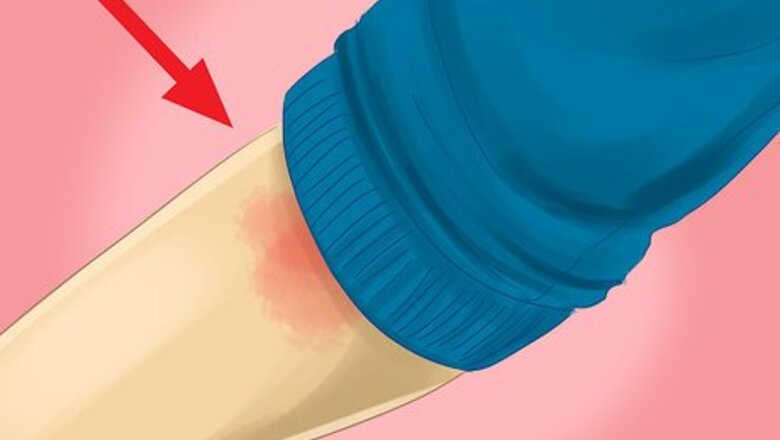
views
Using Home Remedies To Relieve Blister Pain
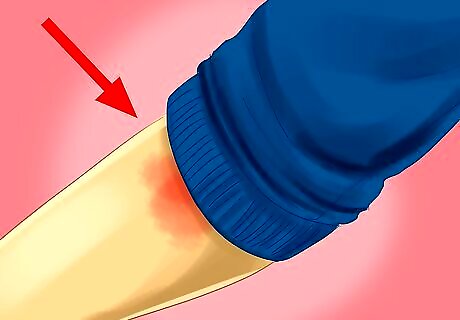
Remove the source of the blister. Most blisters will heal on their own if the source of the blister or the causative agent is removed or eliminated. As soon as you see the beginnings of a blister, take away the cause immediately if possible. For example, remove uncomfortable shoes or clothing that might be causing the blister. If you are blistering from cold or heat, remove your body from the source of the temperature. If you are out in the sun, go indoors immediately or cover yourself with clothing.
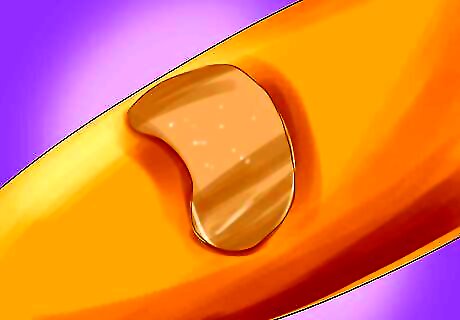
Protect the blister. To help relieve the pain of the blister, and start healing it, you should protect it. Use a moleskin pad or other bandage to cover and protect a blister. Protecting the blister is extremely important if the blister is on a weight-bearing area, like your foot. You can cut a cushioning bandage into a donut shape to help cushion the area while leaving the blister untouched. Though you want to cover the blister when you are going to put weight or other objects against it, leave the blister open to the air as much as possible. For example, when you are at home, uncover the blister.
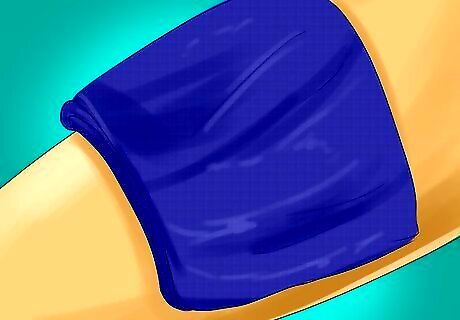
Soak the blister. Try soaking the blister if it is bothering you. You can soak the blister in cool water every few hours, especially if it is painful or itchy. Place a rag in cold water, twist out all the water, then place it on the blister for a calming affect.
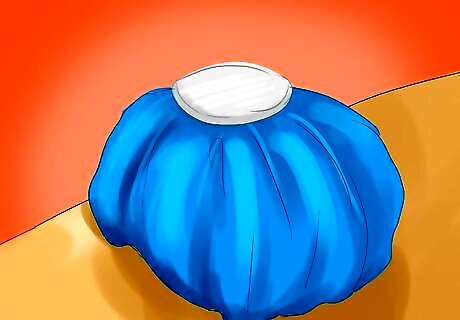
Use an ice pack. Blood blisters are painful and should be left alone to heal. To help reduce the pain, you can apply an ice pack to them immediately after they appear. Keep the ice pack on the blood blister for five to 15 minutes every hour until the pain is reduced. You can use a bag of frozen vegetables if you don’t have an ice pack. Wrap the ice pack in a towel. Never apply ice directly onto any blister.
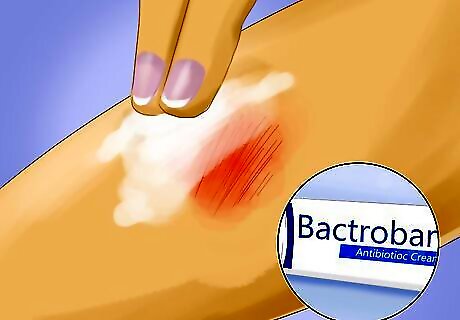
Apply antibiotic ointment. If your blister has popped, apply some antibiotic ointment. This helps heal the blister and prevent infection. Make sure to cover with gauze or a bandage. You can use a triple antibiotic cream, like neomycin or bacitracin. You can also an ointment such as Vaseline. Stop using any ointment that causes a rash. Generally, you only apply ointments and creams to blisters that have popped to help reduce infection and boost the healing process.
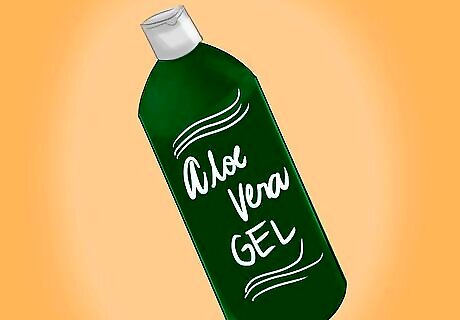
Use aloe vera gel. To help a blister heal, apply aloe vera gel instead of antibiotic ointment. After applying the gel, cover the blister with a bandage. Make sure to use aloe vera gel from a plant. Aloe vera gel that you buy contains extra ingredients that can dry out the skin or irritate and burn. Aloe vera is anti-inflammatory and promotes healing.
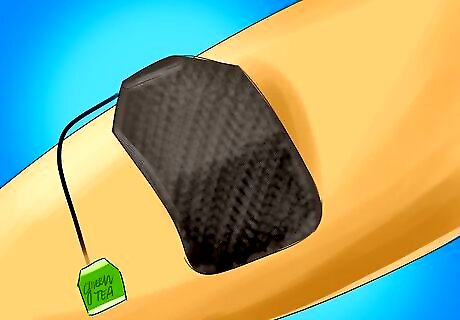
Try green tea. The antioxidants in green tea may help boost the healing of a blister. Soak a bag of green tea with warm water and then let it cool. Apply the wet tea bag to the blister. This helps to reduce pain and itching, along with helping prevent infection and swelling. Green tea bags may be helpful in reducing pain and irritation caused by cold sores. Put the green tea bag into the refrigerator to add a bonus soothing element.
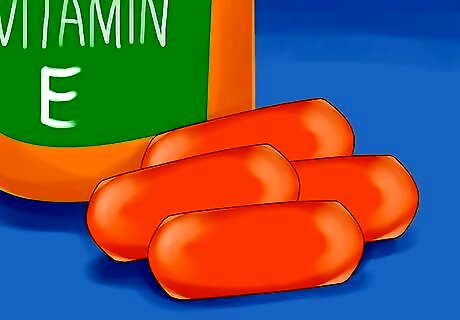
Apply vitamin E. Vitamin E may help boost the healing of a blister. Get a vitamin E capsule and break it open. You can apply the gel inside directly onto the blister. You can also mix the vitamin E with calendula oil, which is traditionally used to help heal wounds. Just mix equal amounts of vitamin E and calendula oil.
Popping A Blister
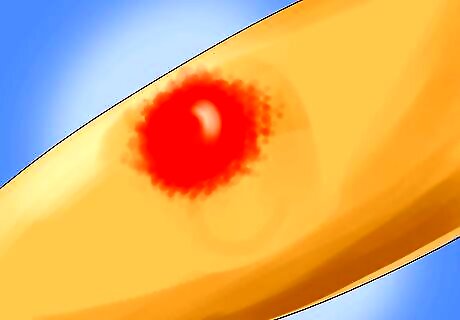
Allow the blister to drain naturally. It is best to allow the blister to drain on its own. That means you should refrain from popping it on your own. If the blister roof is still intact, try to keep it that way by not putting any extra pressure on it that might cause it to pop. The blister roof helps protect against infection. Use a cotton ball dipped in witch hazel to reduce the swelling of the blister instead of popping it. You may want to cover the blister with a bandage just in case it pops, like if you are wearing shoes with a foot blister.
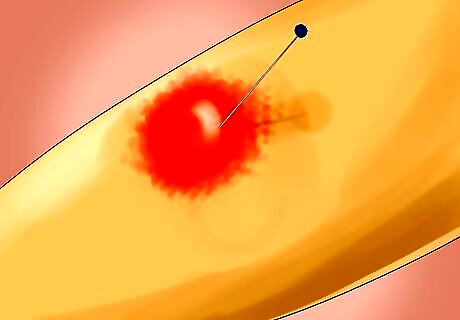
Pop a blister carefully. If you choose to pop and drain the blister to reduce the pain, make sure you do it properly. This helps reduce the risk of infection. Make sure if you do pop the blister that you keep the blister roof intact because it helps protect the skin underneath. Wash your hands and the blister before you begin. Start by wiping down a needle with rubbing alcohol. Then, gently puncture the side of the blister. Try to get the needle close to the edge if possible. Carefully push the fluid out toward the puncture. Remember, try to keep the blister roof intact as much as possible. Use a gauze pad to collect the fluid as it oozes from the blister. Wash the blister with soap and water afterwards.
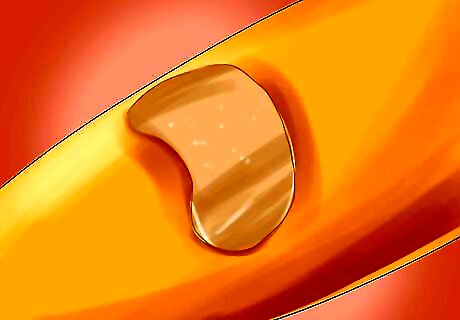
Cover the blister properly. After you have popped and drained the blister, you should cover it with a bandage. This helps protect it from getting infected. Before you apply the gauze, you can apply an antibiotic ointment or Vaseline to the blister. You can add a teaspoon of honey because honey has antibiotic properties and can speed healing. When you place a bandage, make sure the bandage has a “tent” to minimize contact of the bandage with the blister. To do this, leave a bit of space between the blister and the bandage. Try to pull it up so it stays over the skin without touching it. Change the bandage daily. Make sure to keep the bandage dry.
Understanding Blisters
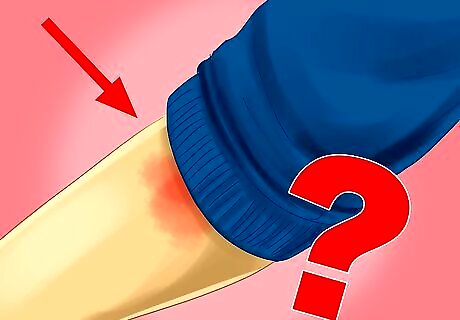
Learn the causes of blisters. Blisters occur when something rubs against the skin and irritates it. There are a number of causes for blisters. These include: Friction: This is generally intense friction over a short period of time. Corns and calluses develop from longer-term rubbing. Burns: Any source of intense heat from flames, steam, the sun, or hot surfaces can result in a blister Cold: Blisters can result from intense cold. Irritants or Allergens: The reaction of the skin to various chemical irritants or allergens can result in blistering. Drug reactions: There are a wide variety of drugs which can cause skin reactions, including blisters. Diseases and Infections: There are autoimmune diseases where the immune system reacts against components of the skin that can result in blisters. These all require medical attention. These disorders include pemphigus, bullous pemphigoid, and dermatitis herpetiformis. Infections with viruses, such as chickenpox, shingles, and cold sores, or bacteria can also result in blistering Genetics: Certain rare genetic disorders result in widespread blistering. Insect bites: Some insect and spider bites result in blisters.
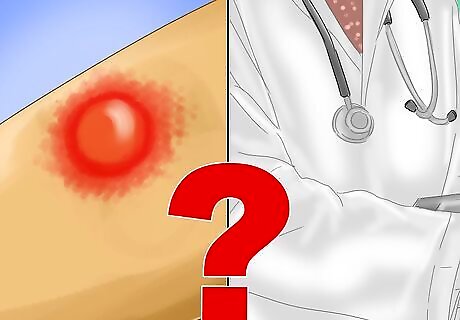
Know when to see a doctor. Most blisters are minor and will go away on their own. However, there are a few reasons why you should go to the doctor with a blister. Go to the doctor if your blister is infected. The blister will have yellow or green pus in it if it is infected. It may also be extremely painful, red, and hot. See your doctor if the blisters are causing you severe pain. Get checked out by a doctor if your blisters keep coming back. You should also get checked out if your blisters are in odd places, like eyelids and your mouth. See your doctor if severe blisters are received from sunburns, burns, scalds, or allergic reactions.
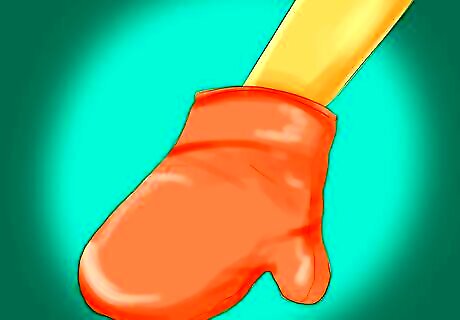
Prevent blisters from occurring. You should try to prevent any blisters from happening in the first place. To help prevent blisters on your feet, only wear properly fitting shoes or socks, shoes, and insoles marketed to help prevent blisters. You may also consider moisture-wicking socks. Place moleskin on places in your shoes to rub against your skin or put powder inside your shoes to absorb moisture. Wear gloves to help prevent blisters from working or when handling cold or hot objects.
















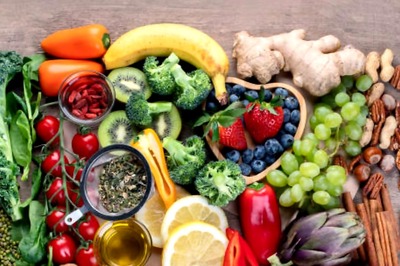


Comments
0 comment